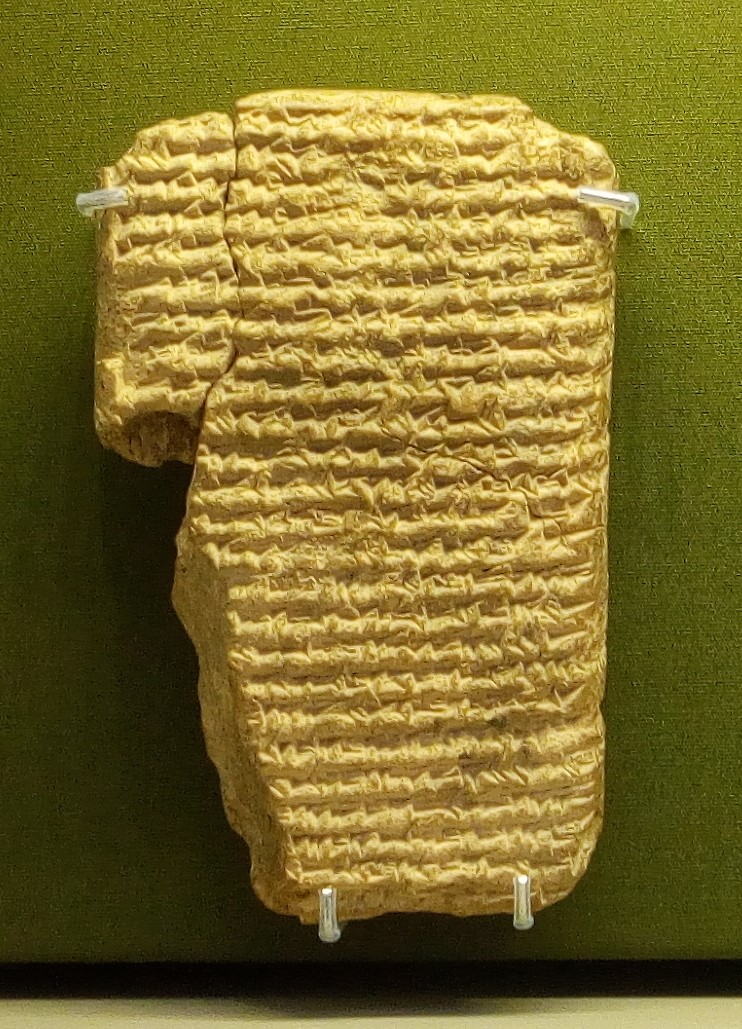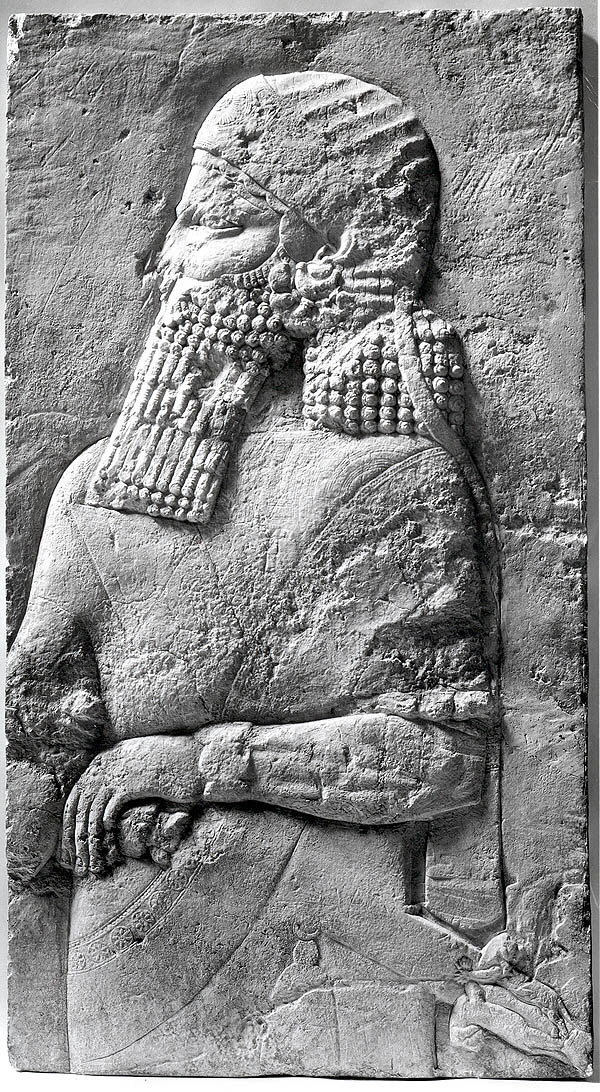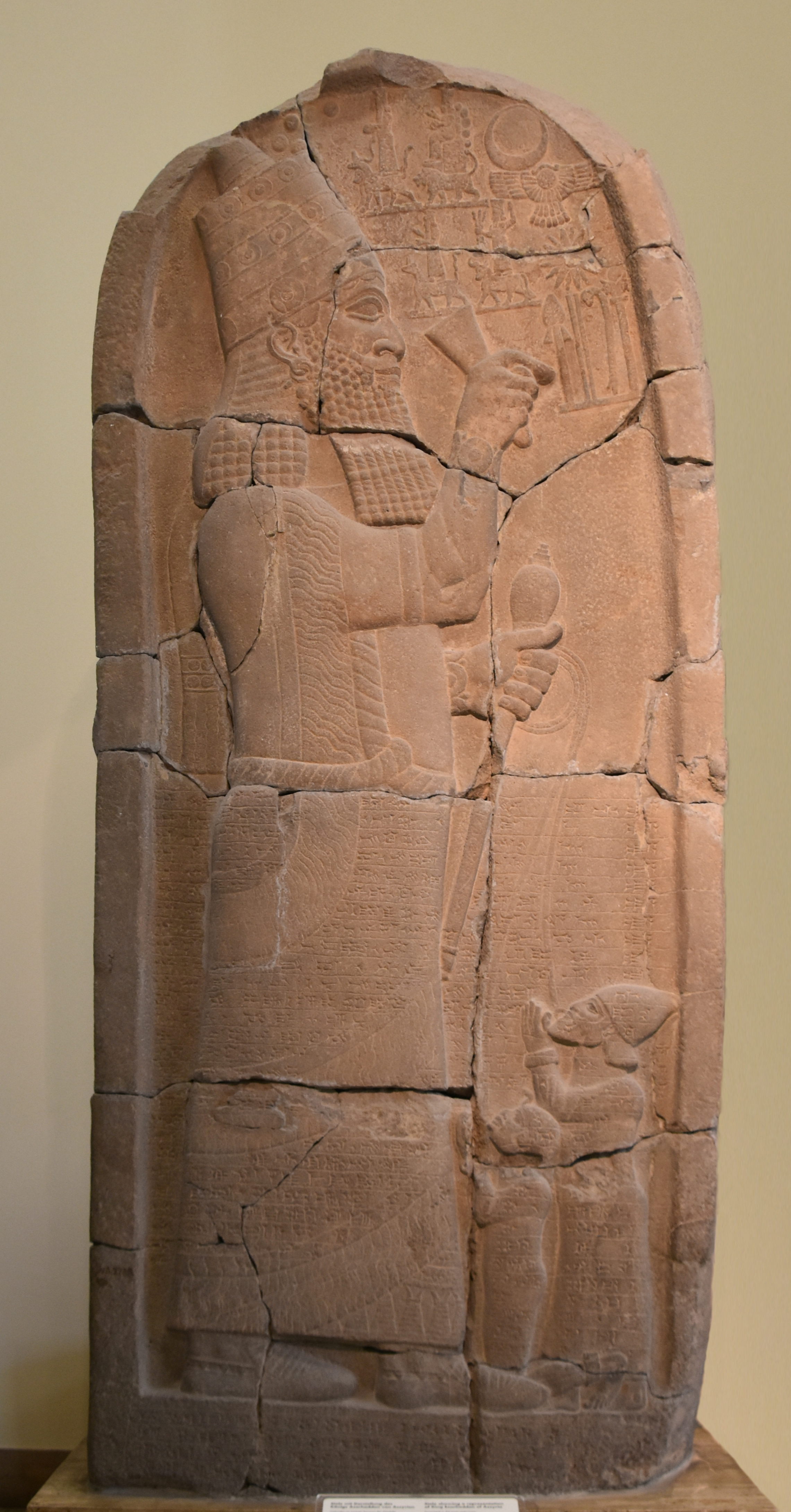|
Esarhaddon
Esarhaddon, also spelled Essarhaddon, Assarhaddon and Ashurhaddon (, also , meaning " Ashur has given me a brother"; Biblical Hebrew: ''ʾĒsar-Ḥaddōn'') was the king of the Neo-Assyrian Empire from 681 to 669 BC. The third king of the Sargonid dynasty, Esarhaddon is most famous for his conquest of Egypt in 671 BC, which made his empire the largest the world had ever seen, and for his reconstruction of Babylon, which had been destroyed by his father. After Sennacherib's eldest son and heir Aššur-nādin-šumi had been captured and presumably executed in 694, the new heir had originally been the second eldest son, Arda-Mulissu, but in 684, Esarhaddon, a younger son, was appointed instead. Angered by this decision, Arda-Mulissu and another brother, Nabû-šarru-uṣur, murdered their father in 681 and planned to seize the Neo-Assyrian throne. The murder, and Arda-Mulissu's aspirations of becoming king himself, made Esarhaddon's rise to the throne difficult and he first ... [...More Info...] [...Related Items...] OR: [Wikipedia] [Google] [Baidu] |
Sargonid Dynasty
The Sargonid dynasty was the final ruling dynasty of Assyria, ruling as kings of Assyria during the Neo-Assyrian Empire for just over a century from the ascent of Sargon II in 722 BC to the fall of Assyria in 609 BC. Although Assyria would ultimately fall during their rule, the Sargonid dynasty ruled the country during the apex of its power and Sargon II's three immediate successors Sennacherib (705–681 BC), Esarhaddon (681–669 BC) and Ashurbanipal (669–631 BC) are generally regarded as three of the greatest Assyrian monarchs. Though the dynasty encompasses seven Assyrian kings, two vassal kings in Babylonia and numerous princes and princesses, the term ''Sargonids'' is sometimes used solely for Sennacherib, Esarhaddon and Ashurbanipal. Though the Sargonid dynasty only encompasses the reigns of a few kings, their rule saw the borders of the empire grow to encompass the entire Ancient Near East, the East Mediterranean, Asia Minor, the Caucasus and parts of the Arabian Pe ... [...More Info...] [...Related Items...] OR: [Wikipedia] [Google] [Baidu] |
Sennacherib
Sennacherib ( or , meaning "Sin (mythology), Sîn has replaced the brothers") was the king of the Neo-Assyrian Empire from 705BC until his assassination in 681BC. The second king of the Sargonid dynasty, Sennacherib is one of the most famous Assyrian kings for the role he plays in the Hebrew Bible, which describes his Sennacherib's campaign in the Levant, campaign in the Levant. Other events of his reign include his destruction of the city of Babylon in 689BC and his renovation and expansion of the last great Assyrian capital, Nineveh. Although Sennacherib was one of the most powerful and wide-ranging Assyrian kings, he faced considerable difficulty in controlling Babylonia, which formed the southern portion of his empire. Many of Sennacherib's Babylonian troubles stemmed from the Chaldean tribal chief Marduk-apla-iddina II, who had been List of kings of Babylon, Babylon's king until Sennacherib's father defeated him. Shortly after Sennacherib inherited the throne in 705BC ... [...More Info...] [...Related Items...] OR: [Wikipedia] [Google] [Baidu] |
Nabu-shar-usur
Sennacherib ( or , meaning " Sîn has replaced the brothers") was the king of the Neo-Assyrian Empire from 705BC until his assassination in 681BC. The second king of the Sargonid dynasty, Sennacherib is one of the most famous Assyrian kings for the role he plays in the Hebrew Bible, which describes his campaign in the Levant. Other events of his reign include his destruction of the city of Babylon in 689BC and his renovation and expansion of the last great Assyrian capital, Nineveh. Although Sennacherib was one of the most powerful and wide-ranging Assyrian kings, he faced considerable difficulty in controlling Babylonia, which formed the southern portion of his empire. Many of Sennacherib's Babylonian troubles stemmed from the Chaldean tribal chief Marduk-apla-iddina II, who had been Babylon's king until Sennacherib's father defeated him. Shortly after Sennacherib inherited the throne in 705BC, Marduk-apla-iddina retook Babylon and allied with the Elamites. Though S ... [...More Info...] [...Related Items...] OR: [Wikipedia] [Google] [Baidu] |
Neo-Assyrian Empire
The Neo-Assyrian Empire was the fourth and penultimate stage of ancient Assyrian history. Beginning with the accession of Adad-nirari II in 911 BC, the Neo-Assyrian Empire grew to dominate the ancient Near East and parts of South Caucasus, North Africa and East Mediterranean throughout much of the 9th to 7th centuries BC, becoming the List of largest empires, largest empire in history up to that point. Because of its geopolitical dominance and ideology based in world domination, the Neo-Assyrian Empire has been described as the first world empire in history. It influenced other empires of the ancient world culturally, administratively, and militarily, including the Neo-Babylonian Empire, Neo-Babylonians, the Achaemenid dynasty, Achaemenids, and the Seleucid Empire, Seleucids. At its height, the empire was the strongest military power in the world and ruled over all of Mesopotamia, the Levant and Egypt, as well as parts of Anatolia, Arabian Peninsula, Arabia and modern-day Ir ... [...More Info...] [...Related Items...] OR: [Wikipedia] [Google] [Baidu] |
Ashurbanipal
Ashurbanipal (, meaning " Ashur is the creator of the heir")—or Osnappar ()—was the king of the Neo-Assyrian Empire from 669 BC to his death in 631. He is generally remembered as the last great king of Assyria. Ashurbanipal inherited the throne as the favored heir of his father Esarhaddon; his 38-year reign was among the longest of any Assyrian king. Though sometimes regarded as the apogee of ancient Assyria, his reign also marked the last time Assyrian armies waged war throughout the ancient Near East and the beginning of the end of Assyrian dominion over the region. Esarhaddon selected Ashurbanipal as heir 673. The selection of Ashurbanipal bypassed the elder son Shamash-shum-ukin. Perhaps in order to avoid future rivalry, Esarhaddon designated Shamash-shum-ukin as the heir to Babylonia. The two brothers jointly acceded to their respective thrones after Esarhaddon's death in 669, though Shamash-shum-ukin was relegated to being Ashurbanipal's closely monitored vassal. Mu ... [...More Info...] [...Related Items...] OR: [Wikipedia] [Google] [Baidu] |
Naqiʾa
Naqiʾa or Naqia (Akkadian language, Akkadian: , also known as Zakūtu (), was a wife of the Assyrian king Sennacherib (705–681 BC) and the mother of his son and successor Esarhaddon (681–669). Naqiʾa is the best documented woman in the history of the Neo-Assyrian Empire and she reached an unprecedented level of prominence and public visibility; she was perhaps the most influential woman in Assyrian history. She is one of the few ancient Assyrian women to be depicted in artwork, to commission her own building projects, and to be granted laudatory epithets in letters by courtiers. She is also the only known ancient Assyrian figure other than kings to write and issue a treaty. Naqiʾa must have been married to Sennacherib before he became king (705) since she gave birth to his son Esarhaddon 713. Whether she ever held the position of Queens of the Neo-Assyrian Empire, queen is debated; Assyrian kings had multiple wives but the evidence suggests that only one of them coul ... [...More Info...] [...Related Items...] OR: [Wikipedia] [Google] [Baidu] |
Šamaš-šuma-ukin
Šamaš-šuma-ukin ( or , meaning "Shamash has established the name"), was king of Babylon as a vassal of the Neo-Assyrian Empire from 668 BC to his death in 648. Born into the Assyrian royal family, Šamaš-šuma-ukin was the son of the Neo-Assyrian king Esarhaddon and the elder brother of Esarhaddon's successor Ashurbanipal. Despite being the elder son, Šamaš-šuma-ukin was for unknown reasons bypassed as heir to Assyria. His designation as heir to Babylonia was likely devised by Esarhaddon as a means to counteract future rivalry and jealousy between the brothers. Although Esarhaddon specified that Šamaš-šuma-ukin was to swear an oath of allegiance to Ashurbanipal, the clear primary heir, Šamaš-šuma-ukin was also referred to as Ashurbanipal's "equal brother" and Ashurbanipal was to stay out of his affairs. This part of the succession plans were not upheld by Ashurbanipal after Esarhaddon's death; Šamaš-šuma-ukin only acceded to the Babylonian throne months after Ash ... [...More Info...] [...Related Items...] OR: [Wikipedia] [Google] [Baidu] |
Arda-Mulissu
Arda-Mulissu or Arda-Mulissi (, ), also known as Urdu-Mullissi, Urad-Mullissu and Arad-Ninlil and known in Hebrew writings as Adrammelech ( ''ʾAḏrammeleḵ''), was an ancient Assyrian prince of the Sargonid dynasty, the son of Sennacherib, king of the Neo-Assyrian Empire, and the older brother of Sennacherib's successor Esarhaddon. Arda-Mulissu served as Sennacherib's crown prince and heir for ten years, from the time of the death of Sennacherib's first crown prince Ashur-nadin-shumi in 694 BC, but was for unknown reasons replaced as heir by Esarhaddon in 684 BC. Disappointed by this demotion, Arda-Mulissu was the chief orchestrator of a 681 BC conspiracy in which he and one of his younger brothers, Nabu-shar-usur, murdered Sennacherib in the hopes of seizing the throne. Sennacherib's murder turned some of Arda-Mulissu's supporters against him and his coronation was postponed. In the turmoil that followed, Esarhaddon marched on the Assyrian capital of Nineveh and successfully ... [...More Info...] [...Related Items...] OR: [Wikipedia] [Google] [Baidu] |
Ešarra-ḫammat
Ešarra-ḫammat (, meaning "Ešarra is mistress") was a queen of the Neo-Assyrian Empire as the primary consort of Esarhaddon (681–669 BC). Ešarra-ḫammat had been married to Esarhaddon for over a decade by the time he became king, having married him 695 BC. Few sources from Ešarra-ḫammat's lifetime that mention her are known and she is thus chiefly known from sources dating to after her death in February 672 BC, an event which deeply affected Esarhaddon. Esarhaddon had a great mausoleum constructed for her, unusual for burials of Assyrian queens, and had her death recorded in the Babylonian Chronicles. Ešarra-ḫammat might have been the mother of Esarhaddon's most prominent children, i.e. the daughter Šērūʾa-ēṭirat and the sons Ashurbanipal and Shamash-shum-ukin. Life Ešarra-ḫammat married Esarhaddon 695 BC. According to the Austrian British Assyriologist Gwendolyn Leick, Ešarra-ḫammat might have been of Babylonian ancestry. Ešarra-ḫammat is known ... [...More Info...] [...Related Items...] OR: [Wikipedia] [Google] [Baidu] |
Šērūʾa-ēṭirat
Šērūʾa-ēṭirat ( or , meaning "Šerua is the one who saves"), called Saritrah (Demotic (Egyptian), Demotic: , ) in later Aramaic texts), was an ancient Assyrian princess of the Sargonid dynasty, the eldest daughter of Esarhaddon and the older sister of his son and successor Ashurbanipal. She is the only one of Esarhaddon's daughters to be known by name and inscriptions listing the royal children suggest that she outranked several of her brothers, such as her younger brother Ashur-mukin-paleya, Aššur-mukin-paleʾa, but ranked below the crown princes Ashurbanipal and Shamash-shum-ukin. Her importance could be explained by her possibly being the oldest of all Esarhaddon's children. Šērūʾa-ēṭirat lived into Ashurbanipal's reign, although her eventual fate is unknown; she may have married the Scythians, Scythian king Bartatua and have become the mother of his successor Madyes; a later Aramaic story has her play a central role in attempting to broker peace between Ashur ... [...More Info...] [...Related Items...] OR: [Wikipedia] [Google] [Baidu] |
Victory Stele Of Esarhaddon
The Victory stele of Esarhaddon (also Zenjirli or Zincirli stele) is a dolerite stele commemorating the return of Esarhaddon after his army's 2nd battle and victory over Pharaoh Taharqa in northern ancient Egypt in 671 BC. It was discovered in 1888 in Zincirli Höyük (Sam'al, or Yadiya) by Felix von Luschan and Robert Koldewey. It is now in the Pergamon Museum in Berlin. The prior battle of 674 BC was won by Taharqa, who confronted Esarhaddon after his initial foray into the Levant;''Black Pharaohs,'' ''National Geographic Magazine'', February, 2008, p. 58. Esarhaddon then entered northern Egypt but was repulsed by Taharqa's forces. The second battle of 671 BC saw Taharqa retreat with his army to Memphis; Memphis was taken with Taharqa then fleeing to the Kingdom of Kush. With Esarhaddon's victory he: "slaughtered the villagers and 'erected piles of their heads'", As Esarhaddon wrote later: : Memphis, his royal city, in half a day , with mines, tunnels, assaults, I besieged, I c ... [...More Info...] [...Related Items...] OR: [Wikipedia] [Google] [Baidu] |
List Of Assyrian Kings
The king of Assyria (Akkadian language, Akkadian: , later ) was the ruler of the ancient Mesopotamian kingdom of Assyria, which was founded in the late 21st century BC and fell in the late 7th century BC. For much of its early history, Assyria was little more than a city-state, centered on the city Assur, but from the 14th century BC onwards, Assyria rose under a series of warrior kings to become one of the major political powers of the Ancient Near East, and in its last few centuries it dominated the region as the largest empire the world had seen thus far. Ancient Assyrian history is typically divided into the Old Assyrian Empire, Old, Middle Assyrian Empire, Middle and Neo-Assyrian Empire, Neo-Assyrian periods, all marked by ages of ascendancy and decline. The ancient Assyrians did not believe that their king was divine himself, but saw their ruler as the vicar of their principal deity, Ashur (god), Ashur, and as his chief representative on Earth. In their worldview, Assyria rep ... [...More Info...] [...Related Items...] OR: [Wikipedia] [Google] [Baidu] |








